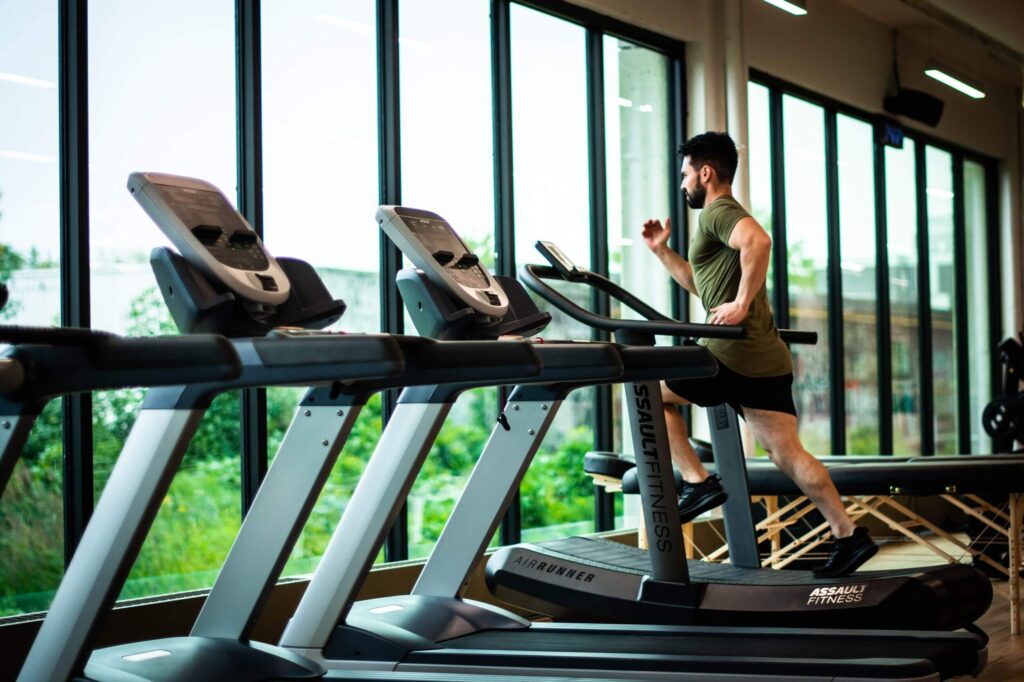Introduction
Do you ever wonder why your blood sugar falls or rises after some workouts? The answer may lie in your insulin response. Let’s find out how high-intensity interval training (HIIT) and milder exercises interact with the MVP of the blood glucose bastion – insulin.
A primer on insulin resistance and sensitivity
Insulin is the hormone used by our cells to absorb glucose from the bloodstream. It maintains balanced blood sugar levels over time. Insulin sensitivity is a measure of how sensitive one’s cells are to the hormone. A low level of insulin sensitivity would point to a lack of efficient use of the hormone in one’s body and cells. A high level, on the other hand, would indicate efficient use. Certain lifestyle changes can improve or alter insulin sensitivity. (2) The opposite of insulin sensitivity is insulin resistance.
Insulin resistance takes place when the body uses insulin ineffectively. This happens in cases when the cells do not process insulin the way they typically do. In turn, this spikes blood sugar levels in the body as the glucose is not absorbed by the cells. If unmonitored, insulin resistance can cause conditions needing treatment as well as long-term monitoring. (3) Let’s find out how this piece of exercise fits into the intriguing blood sugar puzzle.
How does exercise impact insulin sensitivity?
Body movement and physical exertion are keys to releasing the glucose or sugar stored in our fat cells, liver, and muscles. This release nudges our cells to use insulin effectively, ie increases our cells’ insulin sensitivity.
Exercise can be segmented into intense workouts and moderate activity. This distinction can be fathomed through the lens of the metabolic processes of anabolism and catabolism. Catabolism focuses on larger nutrient structures – such as fats, proteins, or tissues. It processes them into more compact units like cells or fatty acids. It is a process that essentially breaks down larger units. On the other hand, anabolism is a combining or consolidation of compact units. Namely, amino acids, cells, or nutrients.
Anabolism processes occur in the direction of building and growth(4) for example, building muscles through strength training. However, reducing fat or muscle loss is tied to the catabolic state, which is generally achieved through aerobic or cardio exercises. While the terms ‘cardio’ and ‘aerobic’ exercises are about similar activities, they trigger different mechanisms. Cardio refers to cardiovascular processes, ie, those of the heart. Aerobic refers to oxygen-consuming exercises. As such, aerobic activity includes low-impact or moderately intense movements and exercises.
HIIT & its effects on insulin sensitivity
The popular acronym HIIT expands to High-Intensity Interval Training. This category of exercises combines strength training with high-impact cardio, punctuated by short periods of recovery between sets. This shortening of rest to recover and catch one’s breath is at the crux of what differentiates cardio from HIIT. Cardio is aerobic, while HIIT is anaerobic, or without oxygen. (5) The term anaerobic refers to an increase in the intensity of a physical activity that consumes glucose without utilising oxygen. An aerobic activity, however, creates energy from the unchallenged, moderate supply of oxygen. This sustains an activity level that is steady, like mild cardio.
Let’s see the processes in our body as these activities are carried out.
We know that when doing HIIT (high intensity interval training), our body consumes less oxygen. It also engages type 2 muscle fibres, ie, the kind that can cater to intense physical needs and can be available at short notice. These type 2 muscle fibres, also called ‘fast twitch muscle fibres’ are fueled by stored glucose. They are used for high-intensity activities that do not last very long, such as deadlift or sprinting. (6) In turn, this process reduces blood sugar levels and aids insulin absorption in cells.
If you’re a workout geek, the mechanics of this process are explained below or you could skip to the cardio part: (7)
- Exercises demanding intense movement alter the course of blood from the liver and digestive system to one’s skeletal muscles.
- As your muscles act anaerobically, or without oxygen, during intense exercises, they quickly burn through the body’s supply of stored fuel (aka glycogen). This causes pain. However, glycolysis takes place in our body during high-intensity training to produce instantly available energy.
- Your body then receives hormonal cues to convert fat into glucose, as it minimises pain and improves your mood.
- Muscles make lactic acid as a part of their physiological reaction to intensive exercise while the acidic levels of the blood around the muscle area drop. This pH level drop prevents our muscles from further contraction. For lactic acid to be used as energy at this point, it is required that you rest.
- Your brain requires more energy to produce neurotransmitters during exercise. Your heart shall beat faster from an increase in adrenaline. Consistent exercise lets the brain get familiar with this ebb and flow of blood, to which it adapts by moderating gene availability. A large part of these amendments enhance brain function.
- Our rib cage muscles help our diaphragm take in more oxygen than at rest. Such breathing adopts a quicker and deeper rhythm. Sweat pours out from glands and the body’s temperature drops as heat is shed. Muscles place a squeeze on veins, pumping blood towards the heart.
- Such exercise also catalyses new blood vessel growth, which reduces blood pressure in the physically fit. Intense exercise also encourages bone formation.
The body makes use of ATP, or adenosine triphosphate, of which the body carries minor amounts. As this supply diminishes, the body needs additional oxygen to make more ATP. When the body warms up, enzymes act on helping muscles reach glycogen aerobically, ie, with oxygen.
An academic review of over 50 studies illustrate how 2 weeks of continuous HIIT reduces insulin resistance. It concluded that HIIT effectively improves metabolic health. Further, HIIT benefits include lowered blood pressure levels and enhanced cardiovascular health. (8)

Mild cardio & its effects on insulin sensitivity
Low impact, or mild cardio workouts offer a breadth of options such as rowing, running, swimming, or walking among others. This kind of physical movement engages type 1 muscle fibres, also referred to as ‘slow-twitch fibres’. They consume oxygen to function, and are slow in creating tension while lending themselves to low-intensity, drawn-out movements over a sustained period of time. (9) The increased amount of oxygen consumed to fuel type 1 muscles also aids in processing glucose molecules to make energy. The aerobic energy system also consumes carbs, fats, and occasional protein to break down ATP for energy. In that, aerobic glycolysis is similar to its anaerobic counterpart. (10)
If you find the nitty-gritty of this science fascinating, read on or skip to the actionable part below. There are 3 stages of ATP production under the aerobic system. Each stage requires chemicals to react with each other, which slows down the ATP. Each increase in this reactive complexity takes more time to produce ATP. These stages are:
1.Aerobic or slow glycolysis
Aerobic movement is made up of continuous and repetitive movement of muscular sections of our body. Aerobic exercises rely on type 1 muscle or slow-twitch fibres, which is fueled by oxygen consumption and intake along with stored energy. This energy pipeline then provides fuel for sustained effort at a low to moderate intensity. The system also converts glycogen to glucose.
2.Krebs or citric acid cycle
Amino acids (from proteins) and fatty acids (from fat) become acetyl coenzyme A. The breaking down of glucose is a thread that runs through this stage as well, forming carbon dioxide, water, and the synthesis of more ATP.
3.Electron transport mechanism
Hydrogen is transferred to the electron transport chain. Water is created as a by-product as hydrogen combines with oxygen. The aerobic system is comparable to a big truck with a massive fuel storage capacity. In contrast, the anaerobic system is a sports car. While the aerobic system can produce more fuel, it does so gradually and over long periods of time, thus being an unsuitable source of fueling quick, sudden, and intense movement. (10)
Aerobic exercises can be carried out as anaerobic exercises if practised at a much higher intensity.
There are assorted benefits for your body offered by aerobic exercise. It can improve insulin sensitivity, increase mitochondrial density, and enhance the count of oxidative enzymes as well as the reactive degree of blood vessels. It further improves cardiac output as well as immune and lung function.
How effective or efficient aerobic exercise can be for your body is associated with the amount of oxygen you can consume. This is how:
Regular aerobic output lets the heart become robust and circulate more volume of blood per beat and better stroke volume. Each improved stroke regulates the heart from pumping as intensely as the exercise’s requirements. This puts the onus of efficiency on the muscles in consuming oxygen from the blood. An exceptionally fit person can consume all of any unit of oxygen molecules. This is called VO2 Max.
Mitochondria, the cells’ key powerhouse, increases its count by about 50% in activity as well as its count with a few weeks of aerobic exercise. (11) These cell components carry out optimal processes to improve one’s movements. This takes place as they use oxygen to burn carbs and fats. It requires more oxygen to burn fat as it is more dense than carbs. Aerobic exercise betters the body’s ability to use oxygen. There is evidence that a low-intensity aerobic exercise session can lead to better insulin sensitivity until the next day. (12)
Recommended Activity For Insulin Sensitivity
To maximise how you can benefit from physical activity, combinations to consider are aerobic pursuits like cycling or swimming combined with HIIT and resistance or weight training. This can enhance the impact on reducing blood sugar levels and cardiometabolic health. (13) (14) (15) A study illustrates how an hour of machine cycling at a moderate pace can improve insulin sensitivity for 48 hours in healthy groups. (16) Another study shows that resistance training for 3 months can lead to improved insulin sensitivity in overweight men without diabetes. (17)
Research of 36,000 peoples’ movements measured all their physical activity, even low-intensity physical activity. Even activities like brisk walking carry benefits. Doses of measured intense exercise can bring about metabolic health benefits. Even a simple, regularly practised regime can enhance metabolic health over a few weeks. Research also points out that intense exercise can spike communication between skeletal muscles and fat tissue, consequently tuning metabolism and improving performance. (18)
Conclusion
Insulin sensitivity is an efficient state for your cells to be in. It allows them the ability to use glucose from the bloodstream for energy. It can be regained through both, cardio and HIIT, as they utilise different muscular fibres fueled by different stores of glucose. A mix of cardio and HIIT or resistance training is a more potent combination than either of them in isolation. The combination allows different efficiencies to be created, as well as benefits the body in different ways.
Disclaimer: The contents of this article are for general information and educational purposes only. It neither provides any medical advice nor intends to substitute professional medical opinion on the treatment, diagnosis, prevention or alleviation of any disease, disorder or disability. Always consult with your doctor or qualified healthcare professional about your health condition and/or concerns and before undertaking a new health care regimen including making any dietary or lifestyle changes.
References








